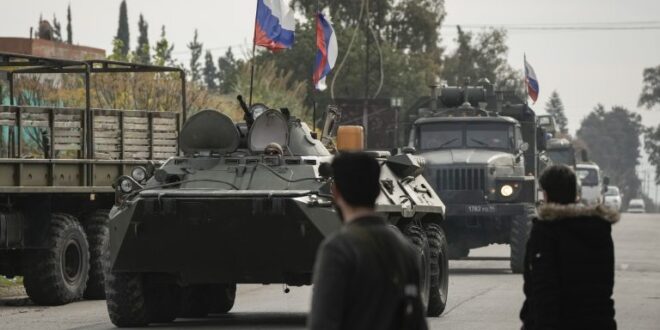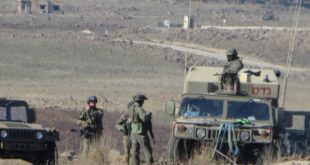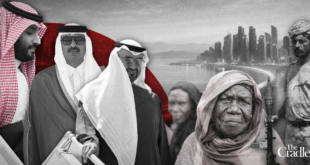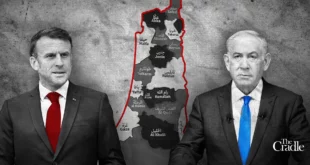- The departure of most Russian forces from post-Assad Syria has created a power vacuum benefitting Israel and Türkiye, in particular.
- Moscow’s reported relocation of military assets from Syria to bases controlled by eastern Libya strongman Khalifa Haftar will enhance Russia’s influence in parts of Africa.
- The Kremlin will rely even more heavily on Iran as its main remaining regional partner, but doing so might jeopardize Moscow’s cooperation with Arab Gulf states on oil production decisions.
- Russia’s drawdown from Syria gives Israel a freer hand to operate over Syrian territory and a more secure air corridor to reach potential targets inside Iran.
For the 44 years that the Assad family ruled Syria, military bases in the country have enabled the Kremlin to project power in the Middle East and throughout the Mediterranean. The port of Tartus, in particular, has been a key base for Russia in recent years, allowing it to refuel, resupply, and repair vessels in the Mediterranean. That facility was established in accordance with a Soviet Union–Syria agreement from 1971 that intended to help the Soviets counterbalance the U.S. Sixth Fleet headquartered in Italy. In 2015, Russia expanded an air base at Hmeimim, in Latakia province, home to the Alawite community that constituted the Assads’ core political base, as the hub of Moscow’s effort to help Assad’s forces put down the armed rebellion that erupted in 2011. That air base served as a headquarters through which the Kremlin controlled Syria’s air space and, in the process, placed constraints on Israeli efforts to target Iranian and Iran-allied military positions in the country.
Until the late 2024 collapse of Bashar al-Assad’s regime in the face of an offensive by Hayat Tahrir al-Sham (HTS) and allied rebel fighters, Russia’s success in keeping Assad in power earned Moscow growing allegiance from Iranian leaders and other actors opposed to U.S. dominance in the region. Using that prestige, Russian diplomats engaged both Israelis and Palestinians, mediated between Turks and Kurds, and established ties with both Shia and Sunni Muslim leaders. Recognizing Russia’s regional strategic influence, Tehran drew progressively closer to Moscow, culminating in a decision in late 2022 to sell Russia its most sophisticated armed drones for use against Ukraine. The Kremlin was also able to parlay its expanded regional role into a de-facto alliance with key Arab Gulf oil exporters, particularly Saudi Arabia and the United Arab Emirates (UAE), to calibrate global oil prices.
Assad’s replacement by an HTS-led government has jeopardized almost all of the benefits Moscow obtained from its relationship with Assad-run Damascus. The new leaders of Syria tie Moscow directly to Assad’s use of brutal tactics against Syrian civilians, including several chemical weapons attacks, and have indicated opposition to a continued Russian military presence in the country. As of late January, observers are reporting Russia has stepped up its military withdrawal from Syria, removing vehicles and containers from Tartus on vessels linked to the Russian military. Russian warships previously docked at the port have not appeared in satellite images since the collapse of the Assad regime. Amid reports that the new Syrian government has canceled Russia’s lease at the port, Russian diplomats have sought to mitigate the strategic setback by engaging the new government to preserve at least some access to the base at Tartus.
At the same time, Moscow appears to be moving to minimize its strategic loss by relocating its military assets from Syria to Libya. Doing so will enable Russia to project additional power in the Mediterranean and Africa. Pointing to an increased Russian threat to NATO’s southern flank, Italy’s Defense Minister Guido Crosetto told Italian daily la Repubblica in December that “Moscow is transferring resources from its Syrian base at Tartus to Libya…creating a security threat in the central Mediterranean.” He added: “That is not a good thing. Russian ships and submarines in the Mediterranean are always a concern, and even more so if instead of being 1,000 kilometers (nearly 600 miles) away they are two steps from us.”
If Russia’s redeployment to Libya is confirmed, Moscow will likely position its assets in Tobruk in eastern Libya, where Moscow has been negotiating a formal deal to use the city’s port with the strongman in control of eastern Libya, Gen. Khalifa Haftar, commander of the Libyan National Army (LNA). To date, Russia’s access to Libya has come through informal agreements and understandings that it will supply training and equipment to the LNA, which is battling a U.N.-recognized government in Tripoli for control over Libya. Tripoli’s administration, which relies on a network of militias to secure its rule in the west of the country, is backed, with weapons and advice, by Türkiye– which has seen its influence in Syria significantly increased by the fall of Assad and the departure of Moscow. Mohamed Eljarh, a Benghazi-based consultant, argues that “If [Russia does] move into Tobruk, it would be seen as a brazen gesture by NATO and the U.S., and a sign that Haftar is no longer even pretending to listen to the West…” By implication, the longstanding and, to date, unsuccessful effort by U.N. mediators to forge an agreement between Tripoli and Haftar to hold national elections on a unified government will be further complicated by expanded Russian support for Haftar.
Even before any relocation, the Kremlin already has been using Haftar-controlled military bases in eastern Libya to intervene in Africa. The LNA leader has, by many accounts, allowed Russian mercenary groups, including the Africa Corps, the successor to the Wagner Private Military Corporation (Wagner Group), access to his bases to transport weapons to armed groups Moscow is supporting elsewhere in Africa. The chief beneficiary of that help has reportedly been the Rapid Support Forces (RSF) battling Sudan’s army for control of that country. That war has created an acute humanitarian disaster, among the worst of any conflict in the world currently. An expanded Russian presence in Libya will provide Russia with greater wherewithal to challenge U.S., French, and other Western interests on the continent.
Whereas Moscow might gain strategically in Africa and the Mediterranean, its partner, Tehran, is evaluating both potential gains as well as losses from Russia’s departure from Syria. Iran’s Islamic Revolutionary Guard Corps (IRGC) leaders have publicly acknowledged that Assad’s fall constituted a major setback to Iran’s regional strategy and Axis of Resistance. Yet, Moscow’s loss of Assad as an ally will enhance its dependence on Iran as its main remaining regional partner. To shore up cooperation with Tehran, Russia might be preparing to proceed with a long-delayed delivery of Sukhoi-35 fighter jets, which Iran sees as crucial to redressing its significant deficiency in conventional armament. In late January, the semi-official Iranian Students’ News Agency (ISNA) quoted Ali Shadmani, the deputy coordinator of the IRGC’s engineering firm Khatam-al Anbiya, as saying Iran purchased the aircraft. He did not specify how many were bought nor whether they had been delivered. U.S. officials are also seeking to block Russia from seeking to rebuild its regional influence through such actions as supplying arms to the Iran-backed Houthi movement in Yemen, which has challenged international shipping through the Red Sea since the October 7, 2023 Hamas attack on Israel.
On the other hand, a closer relationship between Tehran and Moscow is likely to raise alarms among the Arab Gulf states, all of whom remain allied with the U.S. and suspicious of Iranian intent despite improving relations with Tehran in recent years. Russian leaders are likely to try to calibrate a closer defense partnership with Iran by expanding their outreach to leaders of the major Gulf oil exporters, particularly Saudi Arabia and the UAE. In particular, the Kremlin wants to ensure continued cooperation with the key Gulf states in OPEC+ oil production decisions. Still, the loss of Russian influence in the Middle East deprives the Gulf rulers of a key source of leverage they have sought against the U.S. Russia’s removal from Middle East geopolitics might improve the prospects for the Trump administration to broker a Saudi-Israel normalization and a binding, comprehensive U.S.-Saudi defense pact.
Russia’s apparent departure from Syria also opens significant strategic opportunities for Israel, even though the Israelis have sought to avoid provoking Russian President Vladimir Putin by vocally criticizing his invasion of Ukraine. Notably, Israel abstained from providing military support to Ukraine despite Kyiv’s desperate pleas for access to its highly regarded Iron Dome rocket defense system. Russia’s loss of its ability to prevent Israel from entering Syrian air space seemingly removes a key hurdle to Israel’s provision of the system to Kyiv. Israel also now faces fewer challenges deploying air power to strike at any adversaries inside Syria, Iraq, or against Iran itself. In the aftermath of Assad’s collapse, Israel destroyed much of Syria’s remaining conventional armor and other weaponry, including air defense batteries. The departure of Russia’s air force, coupled with the destruction of Syrian as well as some Iranian air defenses at the hands of Israeli strikes, puts Israeli leaders within reach of a longstanding objective – a relatively secure air corridor from Israel to Iran. A diminished threat from hostile air defenses improves the feasibility of any attempt by Israel to destroy key nuclear facilities in Iran. Israel has long defined an Iranian nuclear weapon as an “existential threat.”
 Eurasia Press & News
Eurasia Press & News



